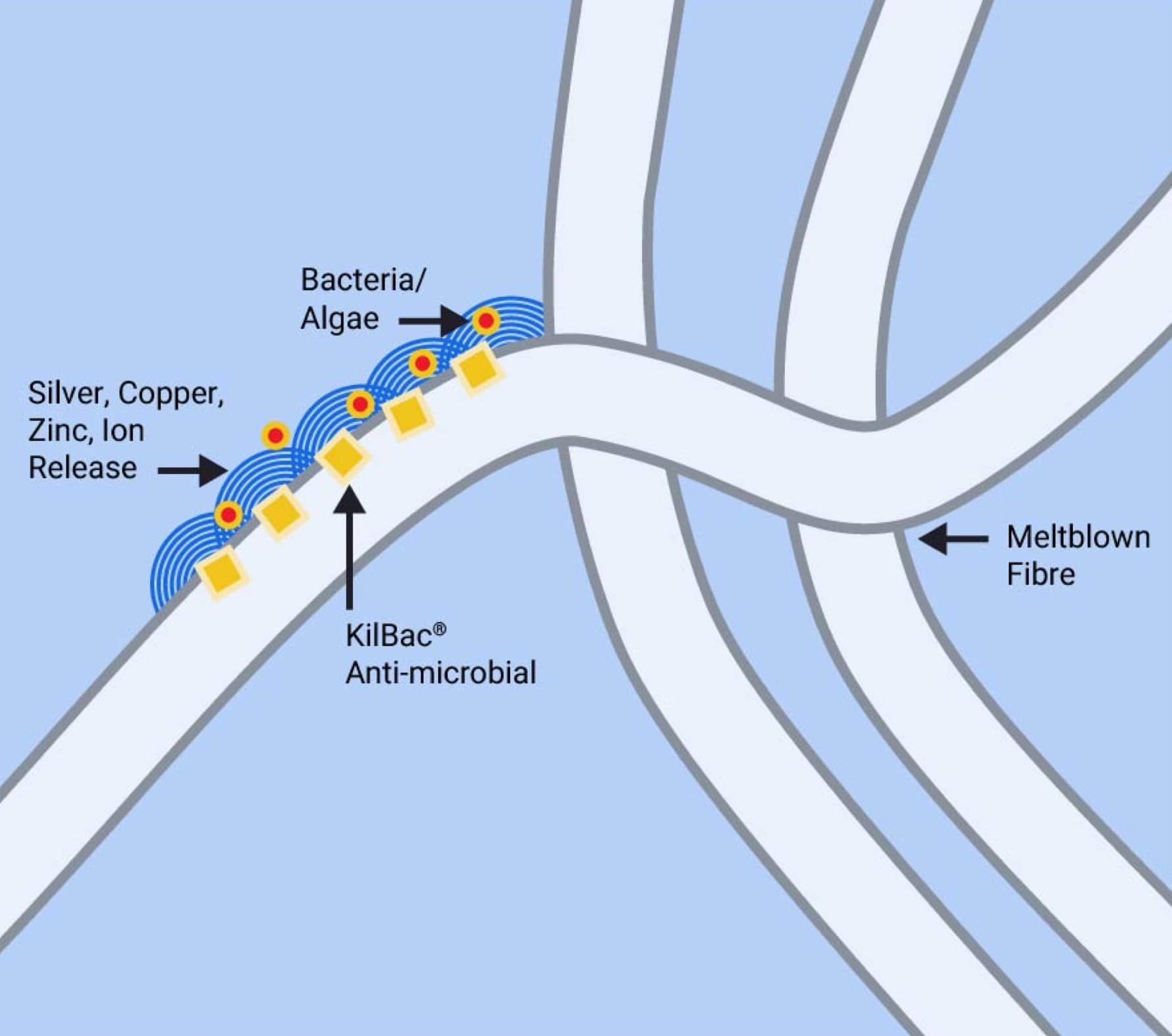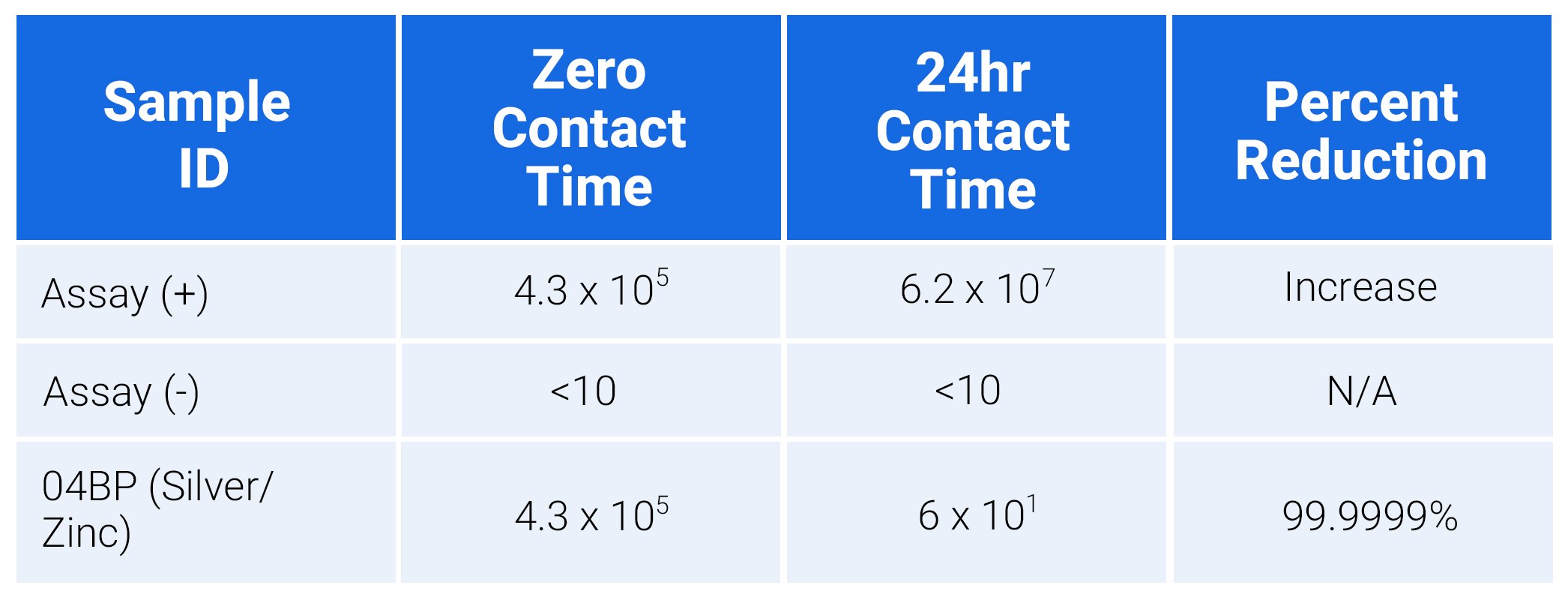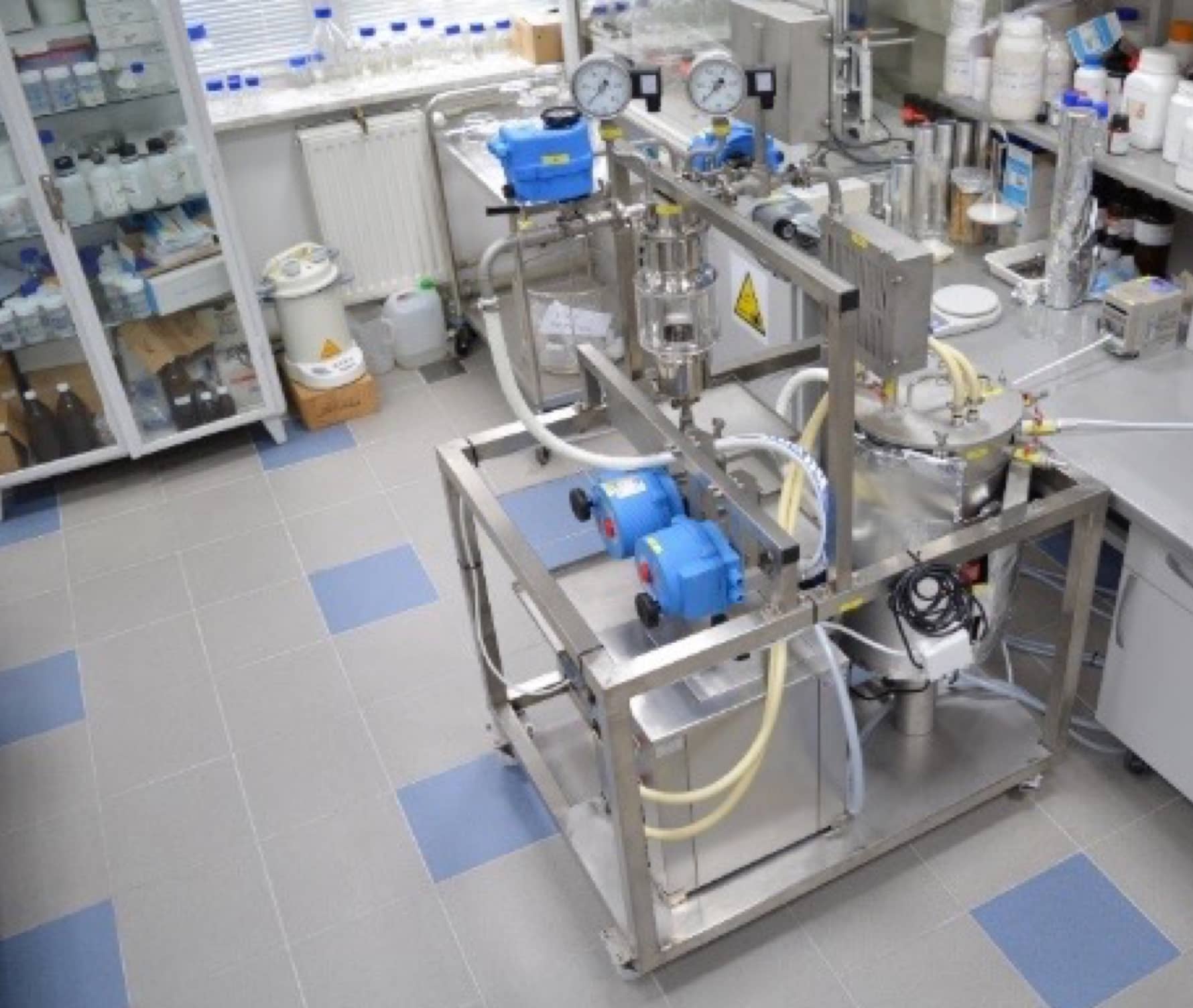The technology
Nanoparticles of silver are often used to confer antimicrobial properties to a polymer. However, the size of these particles means that when compounded before fibre production, a high percentage of them are embedded within the fibre and only a very small percentage are exposed to the water being filtered. This significantly reduces the efficacy of the silver.
At Amazon Filters we utilise micron-sized zeolite particles that contain the active silver, zinc and copper. These are compounded with the base polymer and the fibre size is controlled during the manufacturing process to maximise the surface area exposure of the active ingredient being exposed to the water being filtered.
Active elements are matched to the application. For anti-microbial applications a combination of Silver and Zinc is used. For anti-algal applications a combination of silver and copper is used. Combining the two metals in one has a synergistic effect that can significantly increase the effectiveness of suppressing growth on the filter.


